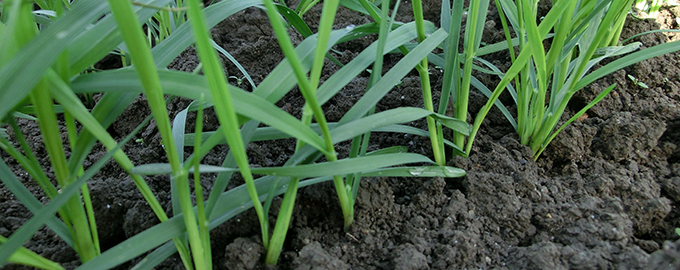Report on identified regional, national and European aspirations on soil services and soil functions

A new report from EJP SOIL presents the current aspirational policy goals at both the regional, national and European scale when it comes to soil services and soil functions.
The report, which contributes to the new EJP SOIL roadmap, is based on an extensive desk study of current agricultural soil-related policies, followed by a stakeholder consultation with 347 different stakeholders from 20 countries or regions, providing their views on soil policy.
The point of departure is a are twelve so-called soil challenges - a term defined by EJP SOIL as different soil processes that need to be prevented or reinforced to prevent soil degradation and to maximize soil functions and ecosystem services and to reach policy ambitions, aspirational goals and EJP SOIL goals.
The report identifies policy targets corresponding to these soil challenges, which for example include avoiding soil erosion, soil sealing, salinization, contamination and acidification. Furthermore, not only an evaluation of the gap between the current policy targets and realization was carried out, but also an evaluation of the futureproof character of the policy targets.
Maintaining or increasing soil organic carbon most important
The policy analysis demonstrates that large differences exist between the number of policy targets per soil challenge.
In general, the soil challenge of maintaining or increasing soil organic carbon can be considered as the most important soil challenge taking into account both the policies of the participating countries and of the EU level. This soil challenge not only has one of the largest shares of quantitative and qualitative targets, but also has a large share of the targets for which an indicator and monitoring is in progress or existing.
At the EU level, a lot of attention is paid to the soil challenge of avoiding contamination is in policy documents as well. In the participating countries, other very important soil challenges in policy includes enhancing nutrient retention/use efficiency, avoiding soil erosion and avoiding soil contamination.
These soil challenges comprise a large share of soil- and agricultural soil specific targets.
Clear policy targets needed
Despite the large number of policy targets identified by the participating countries, there is still a shared need for appropriate, clear and quantified policy targets with a specific time horizon, well-defined indicators and monitoring systems - and similar results are found at the EU level.
Policy targets addressing soil challenges are mostly not expressed in quantitative terms and indicators for monitoring policy targets with references to soil challenges were identified for less than half of the cases. From the stakeholder consultations, it becomes clear that for all soil challenges there is still a way to go before future aspirational goals will be met.
When averaging between all countries, the gap between current policy targets and realizations is for most soil challenges considered between large and halfway in reaching the current policy targets - and for most soil challenges current policy targets are regarded to be somewhere between almost and far from being futureproof. Generally, there is an urgency for policy updates, because the current policy is considered unable to tackle the prominent soil challenges.
Contact
- Peter Maenhout, EV-ILVO, peter.maenhout@ilvo.vlaanderen.be